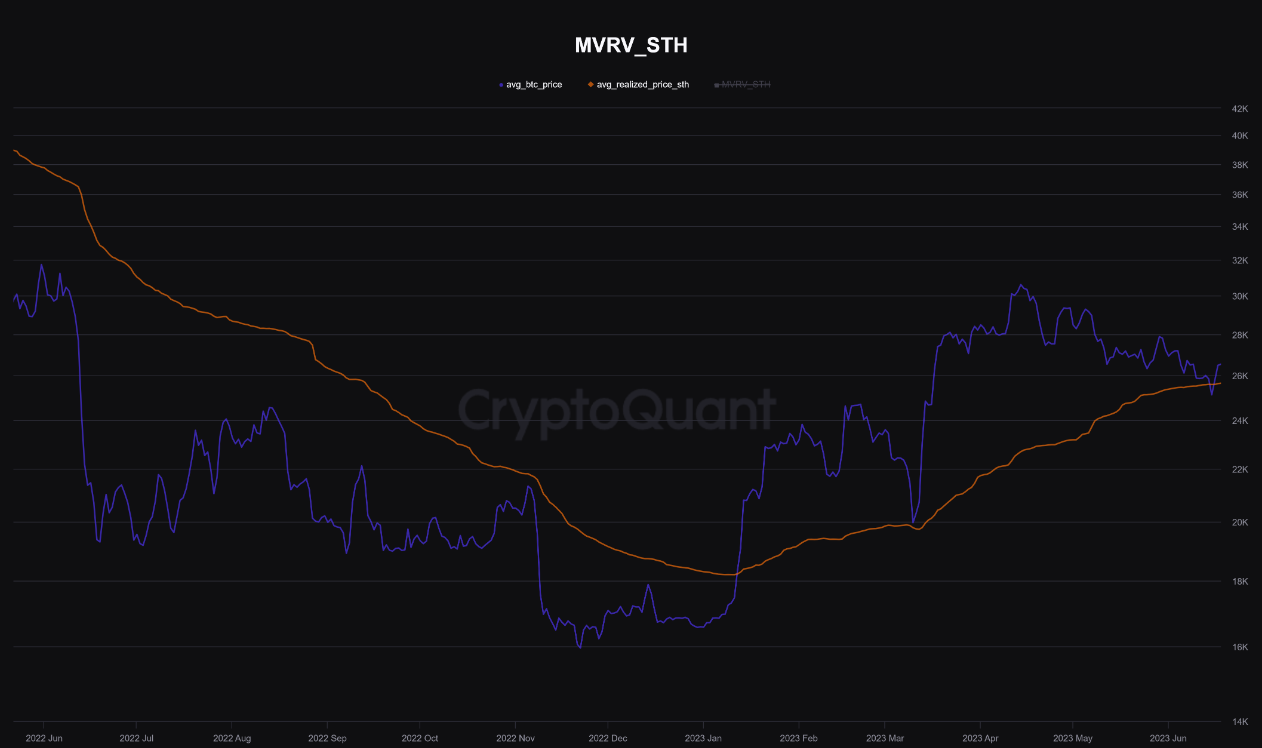- According to the data, the BTC price recently fell below the realized price of short-term investors.
- The realized price of STHs has historically shown interesting interactions with Bitcoin’s spot price.
- In bear markets, investors see acquisition prices as an opportunity to escape. They believe that selling at a cost base would at least avoid taking a loss.
According to the data, the BTC price recently fell below the realized price of short-term investors. What does this mean?
Short-Term Investors Increasing in Bitcoin
According to the data, the BTC price recently fell below the realized price of short-term investors. Here, “realized price” refers to a measure derived from the “realized market value”.
The realized market value assumes that the real value of each coin in circulation is not the current spot price, but the price at which it was last moved/sold on the blockchain.
When this market value is divided by the total number of coins in circulation, the “realized price” emerges. The reason why this indicator is important is that it represents the average investor’s cost base in the market.
In the context of the current discussion, the average acquisition price is relevant not for the entire market, but only for a segment: short-term investors.
Here, “short-term investors” (STHs) refer to investors who purchased their coins no more than 155 days ago. These investors are generally volatile, and their behavior has historically been significant in relation to the trend followed by BTC.
Here is a chart showing the trend in Bitcoin’s STH realized price over the past year:

The value of the measure seems to be close to the spot price recently. The realized price of STHs has historically shown interesting interactions with Bitcoin’s spot price. In bear markets, this measure has acted as resistance to price, while in bull trends, it has changed its function to a support level.
Both of these formations can be seen in the above chart. The cryptocurrency showed a negative reaction to the line during the November 2022 FTX crash, while it found support when the rally retreated in March 2023.
As for the reason behind this formation, it likely lies in the fact that STHs looked at the cost base differently depending on the general trend followed in the market at that time.
In bear markets, investors see acquisition prices as an opportunity to escape. They believe that selling at a cost base would at least avoid taking a loss. This selling becomes a source of resistance on the line.
On the other hand, during rallies, STHs often have a bullish sentiment. They see the cost base as a profitable buying opportunity in the near future when the price is expected to rise. Bulk purchases made when the price touches the line can explain the asset’s reaction here.
As seen in the chart, Bitcoin recently fell slightly below this line, causing concerns about the end of the bull regime. However, in the past few days, the asset has been able to pull itself back above this level.
STHs still seem to have a bullish sentiment as they did not participate in selling when the asset retested the line from below. Naturally, this could suggest that the Bitcoin rally has not yet ended.
| – New Zero Coin Recommendations – Click to Buy | Low Fee! |
